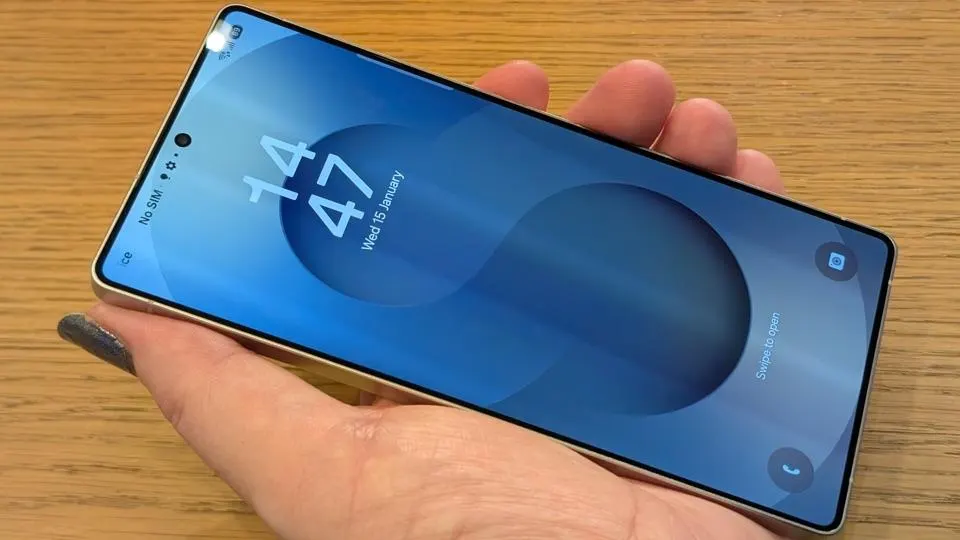Copyright newsweek

People with Type 1 diabetes are estimated to make up to 180 more decisions a day than someone without the disease, according to a study from Stanford University. Each meal, workout, or night’s sleep carries a risk-versus-safety calculation. For many, the choice comes down to this: prick your fingers multiple times a day, or opt for a device that automatically tracks sugar levels every few minutes, and only finger-prick a few times a month. Most choose the latter, if only to make an already tolling condition slightly simpler. That’s where continuous glucose monitors come in. These small wearable devices track glucose in real time, often syncing with smartphone apps or insulin pumps to help patients make faster, safer decisions about their health. Among the most widely trusted are those from Dexcom, the San Diego–based CGM pioneer that has rolled out a series of innovations over two decades—from the STS (2006) and Seven Plus (2009) to the G4 Platinum (2014), G6 (2019), and its newest model, the G7 (2023). The Dexcom G7 is the latest link in a line of devices long relied upon by the Type 1 community. But lately, some patients have had difficulty with this device. Over the past year, patients and caregivers have reported inconsistencies with the G7’s readings—sharp highs when blood sugar is actually stable, or plummeting lows that don’t match fingerstick tests. These discrepancies have led to confusion, fear, and, in some cases, physical danger. And while many say Dexcom is aware of the issue, users describe the company’s response as limited primarily to silence, apologies, and sporadic replacements. A spokesperson for Dexcom told Newsweek that the company “stands by the performance and accuracy” of its devices and “will replace all sensors confirmed as a product failure during their intended lifetime—without limit.” When Ashley Raymond (@ashleylaurenraymond) stepped into a hot yoga class last spring, she trusted her Dexcom G7 to alert her if her glucose dropped too low. Her app read a steady 140 mg/dL, perfectly safe. Moments later, she collapsed. A finger-stick test by another diabetic revealed her actual level: 34 mg/dL—a dangerously low number that could have triggered a seizure. “The Dexcom G7 was telling me, you know, it was 140 or whatever it was saying,” Raymond told Newsweek. “And I thought to myself, ‘Oh my gosh, I almost literally just, you know, passed out.'” For Aubrie Lewis, a mother of a 4-year-old named Wells who uses the G7, those inaccuracies are far more than an inconvenience. “It’s life-threatening for him to have a Dexcom be wildly off target,” she told Newsweek. Wells, who doesn’t feel symptoms when his blood sugar spikes or crashes, relies entirely on his CGM alarms to stay safe. After weeks of erratic readings, Lewis reverted to the older G6 model and raised $25,000 on TikTok (@typeonederfulwells) to purchase a diabetes-alert service dog. “He’s a huge asset to us,” she said to Newsweek, “and he beats Dexcom.” Other parents echo her frustration. Janelle Mitchell, whose 6-year-old son Paxton uses the G7, says the device’s readings “would suddenly show super-high or super-low numbers that made no sense.” Finger-stick tests showed they were often 60 to 80 points off. “The devices they’re putting out aren’t safe, especially for I mean any T1D in general, but especially for young kids whose insulin dosing and stuff like that is on a much smaller scale than a grown adult, that you know, these small discrepancies can make a huge, huge impac,t and it’s not necessarily going to be a good impact,” she said. Because of similar issues and complaints, longtime Dexcom user Richard Moore began compiling reports from the FDA database and social media. He says he noticed a striking pattern: a 70 percent failure rate among the users he surveyed. They’re constantly making updates and tweaks to parts of the software and the battery,” he told Newsweek. “But I just wish they’d come out and say, ‘Look, this is complicated technology — it’s going to fail sometimes. Here’s what we’ll do to take care of you when it does.” Newsweek followed up with Dexcom via email for further comment on such inaccuracies, but did not receive a response by the time of publication. In March 2025, the Food and Drug Administration issued a warning letter to Dexcom after inspectors found that the company had modified the materials used to manufacture its G6 and G7 sensors without obtaining formal premarket clearance. According to the FDA, Dexcom replaced one of the materials used in the sensors’ resistance layer with a new compound that did not meet the company’s own clinical performance targets. In response, Dexcom spokesperson Nadia Conard told MedTech Dive that the company “qualified a second source for one of its raw materials, developed since 2021, to ensure an uninterrupted supply to customers,” adding that “extensive testin...



